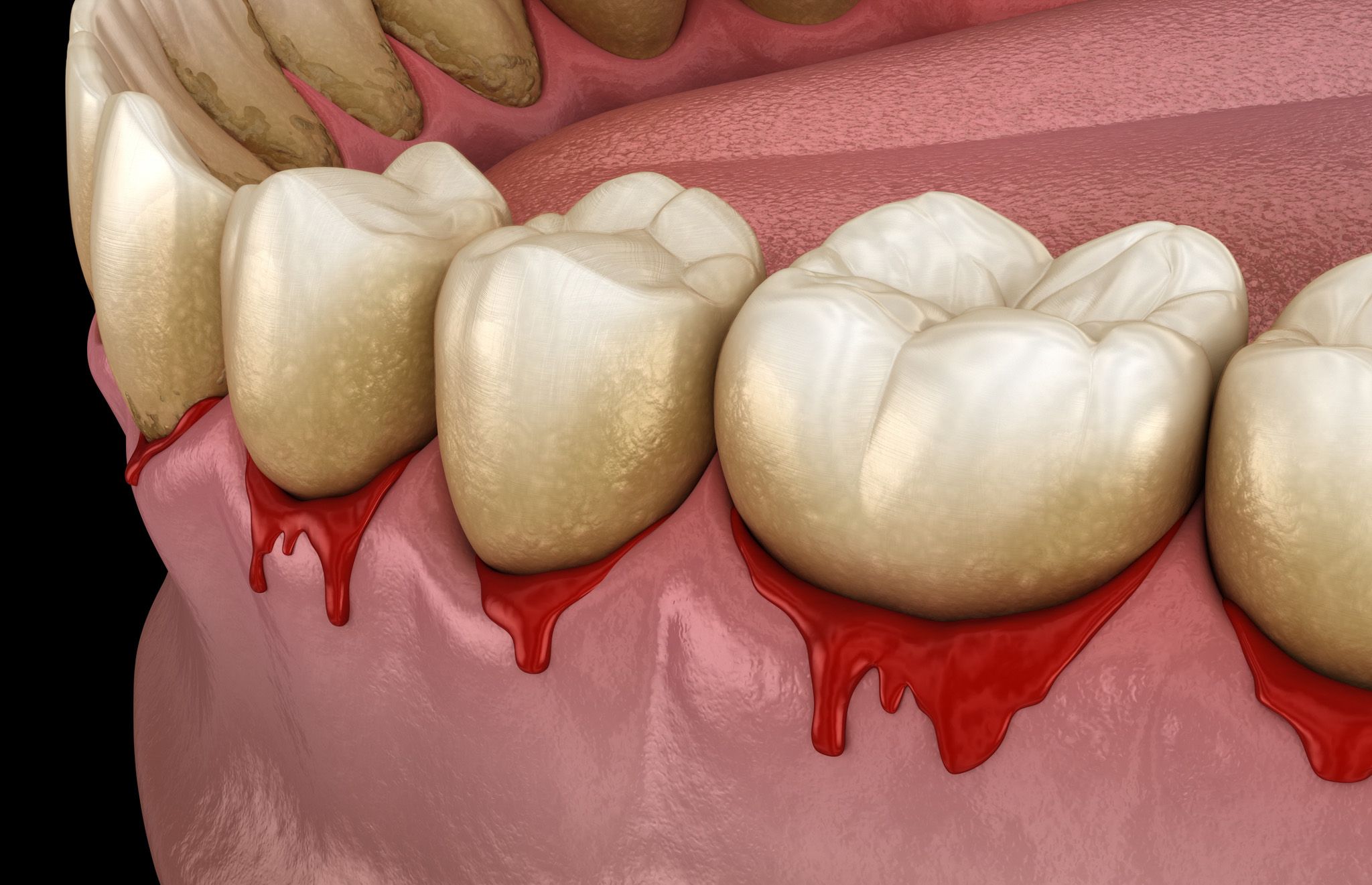If you notice mild bleeding when brushing or flossing your teeth, it may be a sign of gingivitis. While not all bleeding is cause for alarm, it may be something more serious. Gingivitis is the beginning stage of gum disease. It looks like bleeding, swollen, or red gums. At first, your gums are the only part of your mouth affected. However, it can spread to other places.
Gum disease is an infection of the gums that can advance into your jaw bone, causing deterioration and missing teeth. Typically, plaque is the main contributor to gum disease. So if your oral hygiene is not thorough, then you will be susceptible to gum disease.
Plaque is a type of harmful bacteria that builds on every surface of your mouth, including underneath your gums. If you don’t remove it, it will continue to develop and irritate the soft tissues in your mouth. If you have gum disease, don’t worry because many treatment options are available to you.

Treating Gum Disease
Oral Hygiene
Since oral hygiene is one of the most significant factors for gum disease, creating a better routine can help reduce or eliminate your symptoms. When plaque builds on your teeth, your gums become swollen and irritated. Over time, the gums will begin to recede, allowing more plaque to build. Unfortunately, this can cause your gums to recede all the way down to the root, exposing the nerve.
To avoid this, you can brush your teeth twice a day. Brushing helps to eliminate plaque buildup. However, you also need to add flossing to your routine. Flossing removes plaque between your teeth and underneath your gums.
Dental Cleaning
Regular dental cleanings can help prevent and rid your mouth of gum disease. Your dental hygienist uses special tools that can remove plaque better than your daily oral routine. During your cleaning, they will use a scaler to scrape any leftover plaque or tartar buildup.
Additionally, they will clean your teeth with a high-powered brush and a gritty paste, polishing the surface. Finally, they will floss your teeth with a unique technique to eliminate any remaining plaque.
Antibiotics
Since gum disease is an infection, your dentist may recommend antibiotics. Typically, antibiotics will reduce or eliminate the infection. As long as you follow the administration guidelines, you should have no more problems with gum disease. Following your round of antibiotics, you should follow a proper oral health routine.
Sometimes, antibiotics are not enough to eliminate the infection. Therefore, your dentist may recommend another round of antibiotics and dental cleaning.
Surgery
For advanced cases of gum disease, you may need surgery as treatment. A surgeon may perform a surgery that reduces the “pockets” of plaque underneath your gums.
To begin, they will make small incisions to lift the gum tissue. This will help expose a larger area for cleaning. Next, they will scale and scrape the plaque from the tissue. If there is bone loss or tissue damage, your dentist may perform a bone or tissue graft before closing the surgical site.
Warning Signs You Shouldn’t Ignore
Gum disease often starts quietly, but there are clear red flags to watch for. Besides bleeding gums, you might notice persistent bad breath that won’t go away with brushing. Your gums may look puffy or feel tender when touched.
As it gets worse, you could see gums pulling away from teeth or feel teeth becoming loose. If chewing becomes painful or you notice pus between gums and teeth, it’s time to see your dentist immediately. These are signs of a serious infection.
How Smoking Makes Gum Disease Worse
Smoking doesn’t just stain teeth. It’s one of the biggest risk factors for gum disease. Nicotine reduces blood flow to gums, hiding bleeding (a key warning sign) while allowing damage to continue. Smokers develop more tartar buildup and heal slower after dental treatments.
The good news is that quitting smoking can significantly improve gum health. Even cutting back helps your gums fight infection better and respond to treatments more effectively.
Special Tools for Healthier Gums at Home
Your regular toothbrush might not be enough if you have gum disease. Try these helpful tools:
- Soft bristle brushes are gentler on sore gums
- Electric toothbrushes remove more plaque (look for gum care modes)
- Water flossers clean deep under gumlines where string floss can’t reach
- Antibacterial mouthwashes (like those with chlorhexidine) help control bacteria
- Your dentist can recommend the best tools for your specific gum condition.
How Your Overall Health Connects to Gum Disease
Your mouth health affects your whole body. Gum disease has been linked to:
- Diabetes: Diabetes makes gum infections harder to control
- Heart Disease: Gum bacteria can enter bloodstream
- Pregnancy Issues: May increase risk of premature birth
- Lung Conditions: Bacteria can be breathed into lungs
Keeping gums healthy isn’t just about your smile. It helps protect your overall wellness too. Regular dental care is especially important if you have other health conditions. When you’re ready, give Dr. Trinkner a call at 803-400-8729 to schedule a dental exam today.
